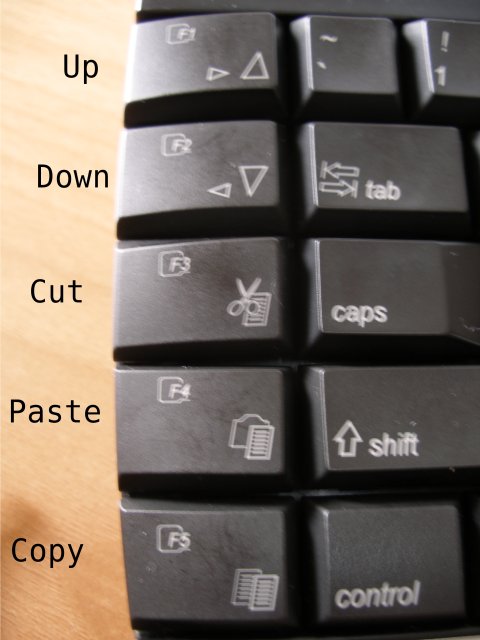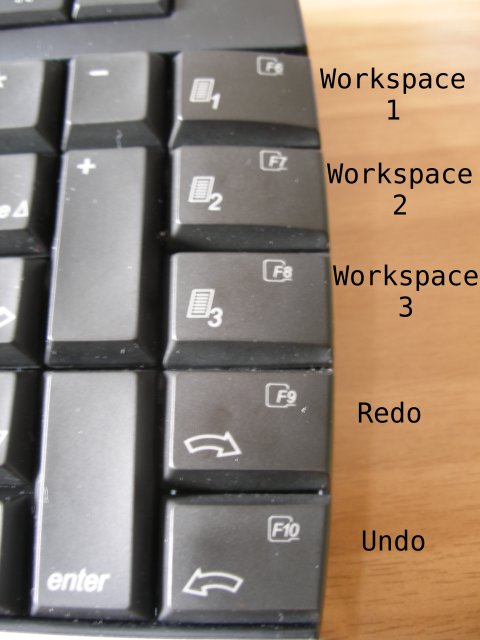*Update on peers supporting encryption at the end of the post*
TorrentFlux is a great program/interface to download your torrents remotely on a linux machine. It is based on php and it uses a modified bittornado client to download the torrents.
The problem: The bittornado client is able to put specific limits on a per torrent basis. That means that you can put a 100kb/sec download and 50kb/sec upload limit per torrent through torrentflux’s web interface. If you have 20 torrents though, this easily becomes 20*50=1Mb/sec upload “limit”. There are cases that you don’t want this to happen and you want both a per torrent limit (eg 50kb/sec) and a global limit (eg 300kb/sec).
The solution: My solution is based on iptables, layer7 filter and tc (iproute2). I am using layer7 filter to pick out the bittorrent packets, iptables to mark those packets with specific values and tc to shape those marked packets into categories. Beware that the method I am using works mostly on the “uploading” part (outgoing traffic). It is not that hard to make it work for the incoming traffic as well, but it is my personal view that downloading with a few Mb/sec is not as harmfull as uploading with a few Mb/sec. I usually have my downloads seeded over many weeks…so it’s good for my ratio to have the torrent downloaded as fast as possible and then seed it endlessly. I usually like to seed until i get a ratio over 1000% per torrent (that means 10 times as much uploaded traffic than downloaded). The following example configs are created for use on a 100mbit line and keeping in mind that outgoing torrent traffic should not exceed 2-2.5Mbits (~250-300kb/sec).
The procedure:
0) Before you begin make sure you have the kernel sources on /usr/src/linux.
1) Then, you need to patch your kernel for layer7 filtering and enable marking. On gentoo linux you only need to:
#emerge -avt net-misc/l7-filter net-misc/l7-protocols
and then configure your kernel for marking.
Here’s how my netfilter configuration looks like:
CONFIG_NETFILTER=y
# CONFIG_NETFILTER_DEBUG is not set
# CONFIG_BRIDGE_NETFILTER is not set
#
# Core Netfilter Configuration
#
# CONFIG_NETFILTER_NETLINK is not set
CONFIG_NETFILTER_XTABLES=y
CONFIG_NETFILTER_XT_TARGET_CLASSIFY=m
# CONFIG_NETFILTER_XT_TARGET_CONNMARK is not set
CONFIG_NETFILTER_XT_TARGET_MARK=m
CONFIG_NETFILTER_XT_TARGET_NFQUEUE=m
CONFIG_NETFILTER_XT_MATCH_COMMENT=m
CONFIG_NETFILTER_XT_MATCH_CONNBYTES=m
CONFIG_NETFILTER_XT_MATCH_CONNMARK=m
CONFIG_NETFILTER_XT_MATCH_CONNTRACK=m
CONFIG_NETFILTER_XT_MATCH_DCCP=m
CONFIG_NETFILTER_XT_MATCH_ESP=m
CONFIG_NETFILTER_XT_MATCH_HELPER=m
CONFIG_NETFILTER_XT_MATCH_LENGTH=m
CONFIG_NETFILTER_XT_MATCH_LIMIT=m
CONFIG_NETFILTER_XT_MATCH_MAC=m
CONFIG_NETFILTER_XT_MATCH_MARK=m
# CONFIG_NETFILTER_XT_MATCH_POLICY is not set
CONFIG_NETFILTER_XT_MATCH_MULTIPORT=m
CONFIG_NETFILTER_XT_MATCH_PKTTYPE=m
# CONFIG_NETFILTER_XT_MATCH_QUOTA is not set
CONFIG_NETFILTER_XT_MATCH_REALM=m
CONFIG_NETFILTER_XT_MATCH_SCTP=m
CONFIG_NETFILTER_XT_MATCH_STATE=m
# CONFIG_NETFILTER_XT_MATCH_STATISTIC is not set
CONFIG_NETFILTER_XT_MATCH_STRING=m
CONFIG_NETFILTER_XT_MATCH_TCPMSS=m
#
# IP: Netfilter Configuration
#
CONFIG_IP_NF_CONNTRACK=m
CONFIG_IP_NF_CT_ACCT=y
CONFIG_IP_NF_CONNTRACK_MARK=y
# CONFIG_IP_NF_CONNTRACK_EVENTS is not set
CONFIG_IP_NF_CT_PROTO_SCTP=m
CONFIG_IP_NF_FTP=m
CONFIG_IP_NF_IRC=m
CONFIG_IP_NF_NETBIOS_NS=m
CONFIG_IP_NF_TFTP=m
CONFIG_IP_NF_AMANDA=m
CONFIG_IP_NF_PPTP=m
CONFIG_IP_NF_H323=m
CONFIG_IP_NF_SIP=m
CONFIG_IP_NF_QUEUE=m
CONFIG_IP_NF_IPTABLES=y
CONFIG_IP_NF_MATCH_IPRANGE=y
CONFIG_IP_NF_MATCH_LAYER7=m
# CONFIG_IP_NF_MATCH_LAYER7_DEBUG is not set
CONFIG_IP_NF_MATCH_TOS=y
CONFIG_IP_NF_MATCH_RECENT=m
CONFIG_IP_NF_MATCH_ECN=m
CONFIG_IP_NF_MATCH_DSCP=m
CONFIG_IP_NF_MATCH_AH=m
CONFIG_IP_NF_MATCH_TTL=m
CONFIG_IP_NF_MATCH_OWNER=m
CONFIG_IP_NF_MATCH_ADDRTYPE=m
CONFIG_IP_NF_MATCH_HASHLIMIT=m
CONFIG_IP_NF_FILTER=y
CONFIG_IP_NF_TARGET_REJECT=y
CONFIG_IP_NF_TARGET_LOG=y
CONFIG_IP_NF_TARGET_ULOG=m
CONFIG_IP_NF_TARGET_TCPMSS=y
CONFIG_IP_NF_NAT=m
CONFIG_IP_NF_NAT_NEEDED=y
CONFIG_IP_NF_TARGET_MASQUERADE=m
CONFIG_IP_NF_TARGET_REDIRECT=m
CONFIG_IP_NF_TARGET_NETMAP=m
CONFIG_IP_NF_TARGET_SAME=m
CONFIG_IP_NF_NAT_SNMP_BASIC=m
CONFIG_IP_NF_NAT_IRC=m
CONFIG_IP_NF_NAT_FTP=m
CONFIG_IP_NF_NAT_TFTP=m
CONFIG_IP_NF_NAT_AMANDA=m
CONFIG_IP_NF_NAT_PPTP=m
CONFIG_IP_NF_NAT_H323=m
CONFIG_IP_NF_NAT_SIP=m
CONFIG_IP_NF_MANGLE=m
CONFIG_IP_NF_TARGET_TOS=m
CONFIG_IP_NF_TARGET_ECN=m
CONFIG_IP_NF_TARGET_DSCP=m
CONFIG_IP_NF_TARGET_TTL=m
CONFIG_IP_NF_TARGET_CLUSTERIP=m
# CONFIG_IP_NF_RAW is not set
CONFIG_IP_NF_ARPTABLES=m
CONFIG_IP_NF_ARPFILTER=m
CONFIG_IP_NF_ARP_MANGLE=m
You can clearly see layer7 being enabled as a module: CONFIG_IP_NF_MATCH_LAYER7=m
Rebuild your kernel and install the proper modules. If you need to reboot your machine to apply the new kernel do it now.
2) Now it’s time to install iptables and iproute2 if you don’t have them already. On gentoo linux:
#echo "net-firewall/iptables extensions l7filter" >> /etc/portage/package.use
#emerge -avt net-firewall/iptables sys-apps/iproute2
3) Now it’s the iptables marking time. I am going to show you (some of) the output of my iptables-save command. Change it to fit your neeeds:
# Generated by iptables-save v1.3.5 on Fri Jan 12 20:50:52 2007
*mangle
:PREROUTING ACCEPT [1102387:193393325]
:INPUT ACCEPT [1102372:193390208]
:FORWARD ACCEPT [0:0]
:OUTPUT ACCEPT [2100485:2922693566]
:POSTROUTING ACCEPT [2100483:2922690566]
-A PREROUTING -s IP.OF.MACHINE -p tcp -m multiport --sports 22,80 -j MARK --set-mark 1001
-A PREROUTING -d IP.OF.MACHINE -p tcp -m multiport --dports 22,80 -j MARK --set-mark 1001
-A PREROUTING -m layer7 --l7proto ssh -j MARK --set-mark 1001
#-A PREROUTING -m layer7 --l7proto bittorrent -j MARK --set-mark 11090
-A PREROUTING -m mark --mark 1001 -j RETURN
-A POSTROUTING -s IP.OF.MACHINE -p tcp -m multiport --sports 22,80 -j MARK --set-mark 1001
-A POSTROUTING -d IP.OF.MACHINE -p tcp -m multiport --dports 22,80 -j MARK --set-mark 1001
-A POSTROUTING -m mark --mark 1001 -j RETURN
-A POSTROUTING -m connmark --mark 0x0 -j MARK --set-mark 11030
-A POSTROUTING -m layer7 --l7proto dns -j MARK --set-mark 11010
-A POSTROUTING -m layer7 --l7proto ssh -j MARK --set-mark 11010
-A POSTROUTING -p tcp -m tcp --tcp-flags SYN,RST,ACK SYN -j MARK --set-mark 11010
-A POSTROUTING -p icmp -j MARK --set-mark 11010
-A POSTROUTING -m layer7 --l7proto bittorrent -j MARK --set-mark 11090
COMMIT
# Completed on Fri Jan 12 20:50:52 2007
# Generated by iptables-save v1.3.5 on Fri Jan 12 20:50:52 2007
*nat
:PREROUTING ACCEPT [407:30699]
:POSTROUTING ACCEPT [111:6662]
:OUTPUT ACCEPT [111:6662]
COMMIT
# Completed on Fri Jan 12 20:50:52 2007
# Generated by iptables-save v1.3.5 on Fri Jan 12 20:50:52 2007
*filter
:INPUT ACCEPT [266369:32040284]
:FORWARD ACCEPT [0:0]
:OUTPUT ACCEPT [479227:676859047]
COMMIT
# Completed on Fri Jan 12 20:50:52 2007
You need to change IP.OF.MACHINE with the IP of your linux box.
4) And now the traffic shaping part:
# Main Link
LINK=100000
SHAPEDLINK=50000
# High Priority
HIGHPRIO=10000
HIGHPRIO_MAX=$SHAPEDLINK
# Normal
NORMAL=512
NORMAL_MAX=$SHAPEDLINK
# Downloads
TOR=512
TOR_MAX=2048
# del old
tc qdisc del dev $DEV root 2> /dev/null > /dev/null
# add root
tc qdisc add dev $DEV root handle 100: htb default 1
tc class add dev $DEV parent 100: classid 100:1 htb rate ${LINK}kbit
tc qdisc add dev $DEV parent 100:1 handle 1: htb
tc class add dev $DEV parent 1: classid 1:1 htb rate ${SHAPEDLINK}kbit
# some more rules
tc class add dev $DEV parent 100: classid 100:1 htb rate ${LINK}kbit
tc qdisc add dev $DEV parent 100:1 sfq perturb 10
tc filter add dev $DEV parent 100:0 protocol ip prio 1 handle 1001 fw flowid 100:1
tc class add dev $DEV parent 1:1 classid 1:10 htb rate ${SHAPEDLINK}kbit ceil ${SHAPEDLINK}kbit prio 5
tc qdisc add dev $DEV parent 1:10 sfq perturb 10
# High priority
tc class add dev $DEV parent 1:10 classid 1:1010 htb rate ${HIGHPRIO}kbit ceil ${HIGHPRIO_MAX}kbit prio 0
tc qdisc add dev $DEV parent 1:1010 sfq perturb 10
tc filter add dev $DEV parent 1:0 protocol ip prio 0 handle 11010 fw flowid 1:1010
# normal
tc class add dev $DEV parent 1:10 classid 1:1030 htb rate ${NORMAL}kbit ceil ${NORMAL_MAX}kbit prio 5
tc qdisc add dev $DEV parent 1:1030 sfq perturb 10
tc filter add dev $DEV parent 1:0 protocol ip prio 5 handle 11030 fw flowid 1:1030
# bittorent
tc class add dev $DEV parent 1:10 classid 1:1090 htb rate ${TOR}kbit ceil ${TOR_MAX}kbit prio 10
tc qdisc add dev $DEV parent 1:1090 sfq perturb 10
tc filter add dev $DEV parent 1:0 protocol ip prio 10 handle 11090 fw flowid 1:1090
The rules are pretty straightforward…so I am not going to fully explain them. The basic concept is that you create a “shaped” partition of your bandwith and you add classes (high priority, normal , bittorrent) there. The trick is that you can skip anything you don’t want shaped by marking it with iptables 1001 mark.
In my iptables example above, I mark as 1001 the outgoing ssh and http traffic. This way I can shape the seeding of my torrents using TorrentFlux but I can download via http without any traffic shaping the torrents to my PC at home. I can also ssh to the machine without any latency caused by the shaping because the sshd port (22) is marked with 1001.
The only problem I faced with those scripts was that sometimes the layer7 filter for bittorrent let’s some torrent traffic pass by. My solution to that was to change NORMAL_MAX=$SHAPEDLINK to NORMAL_MAX=2048 for example. Then, even “normal traffic” was shaped. Remember that anything I didn’t want shaped, was marked as 1001 on the iptables script…so the machine was still very responsive even after shaping the “normal traffic”.
To check how your scripts are doing in terms of shaping you can download this excellent perl script: tc-viewer. Click here for a screenshot: tc-viewer htb screenshot
The above example configs are very very generic. If you have a server that serves many other duties apart from ssh, http and bittorrent, then this script might not work out of the box for you.
*Update*
It looks like the problem I had with layer7 bittorrent filter missing packets was not actually a layer7’s “problem”, but rather a new feature of the latest version of bittornado. I was using bittornado version 0.3.18 (experimental) which is the first bittornado version that comes with Message_Stream_Encryption. What this means: whenever bittornado finds another peer with encryption capabilities, it encrypts all traffic between you and the other peer, so the layer7 filter cannot understand that these flows are torrent traffic anymore, and categorizes them as “normal” traffic. That’s why I needed to “shape” normal traffic as well.
There are three ways to cope with encrypted bittorrent traffic. The first one is the one I described above without even knowing about it (shaping normal traffic). The second way is to go back to a version without encryption (0.3.17), which I think is a _really_ bad idea. Encryption came to help us hide our traffic from ISP filters, and is a step we can all take to protect ourselves. The third way is to mark the port range that torrentflux uses (check the admin panel of torrentflux for it) as torrent traffic by our iptables script. If the port range is high enough it can be almost certain that no other service will use those ports, so no priority traffic will be mis-matched as “torrent traffic”. If, for example, you have defined your port range to be from port 61000 to port 63000, then inject a command like:
-A POSTROUTING -p tcp --sport 61000:63000 -j MARK --set-mark 11090
just below the
-A POSTROUTING -m layer7 --l7proto bittorrent -j MARK --set-mark 11090
command of the iptables script above.
Enjoy shaped encrypted bittorent uploads! Keep seeding…

 Filed by kargig at 21:26 under Linux
Filed by kargig at 21:26 under Linux


 4 Comments
4 Comments





